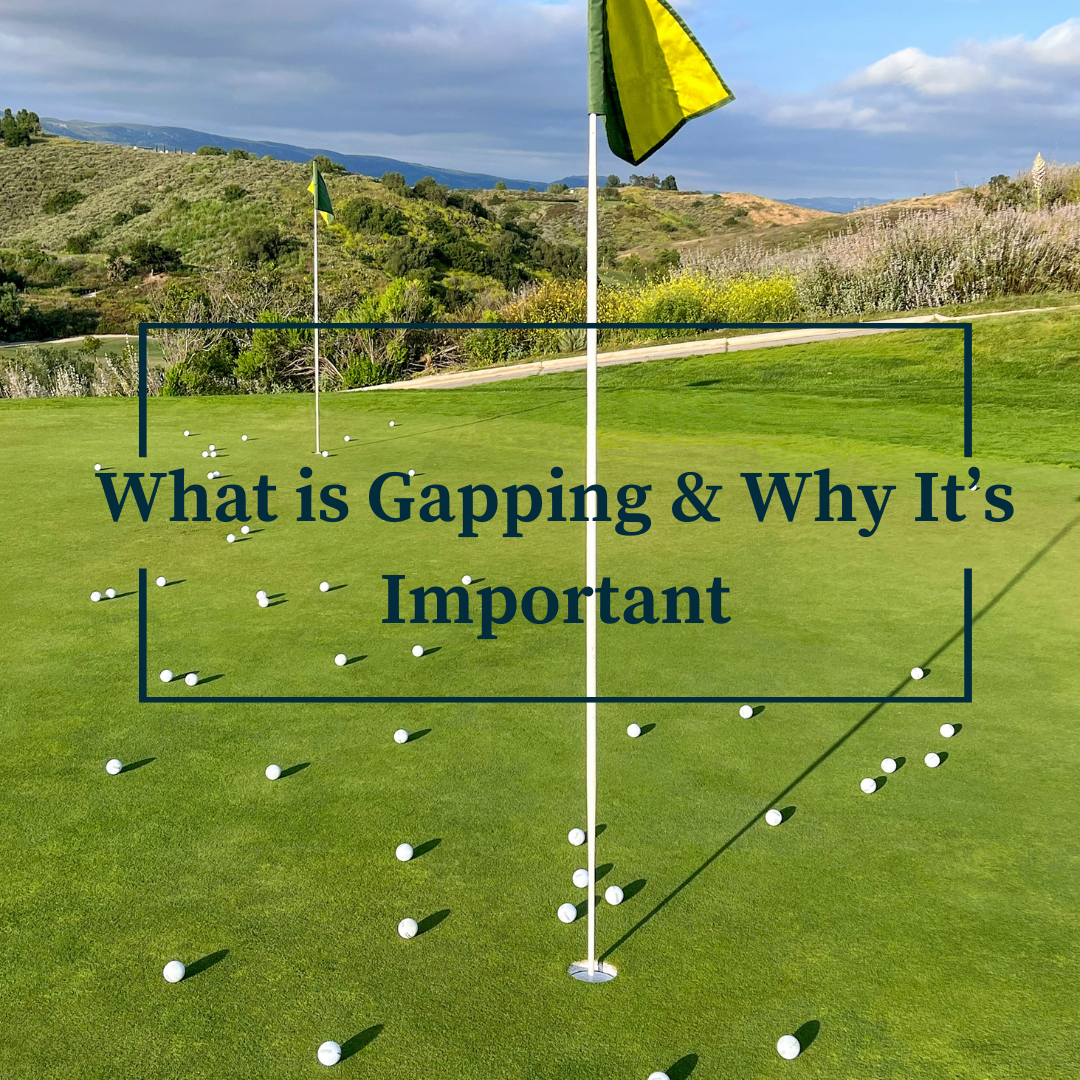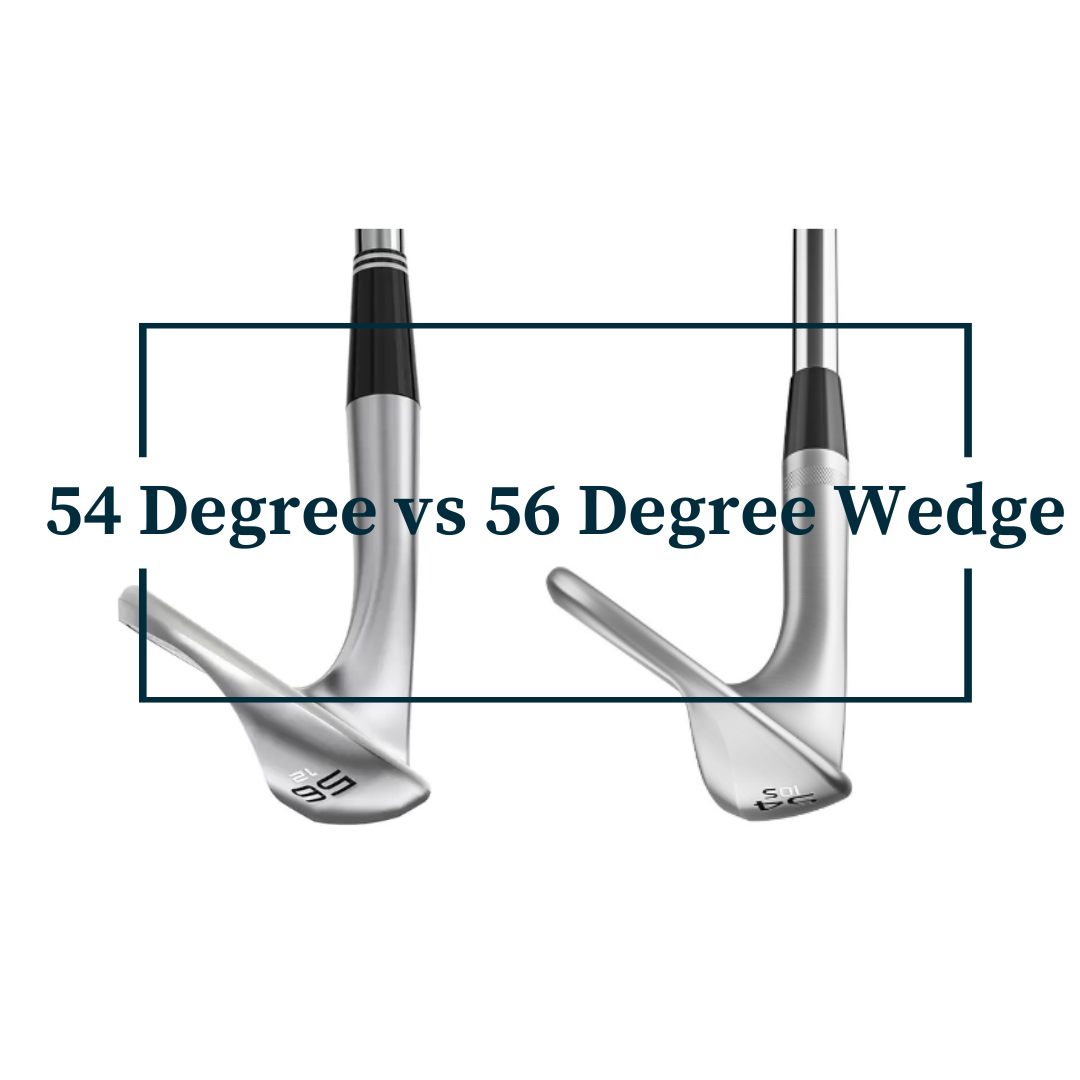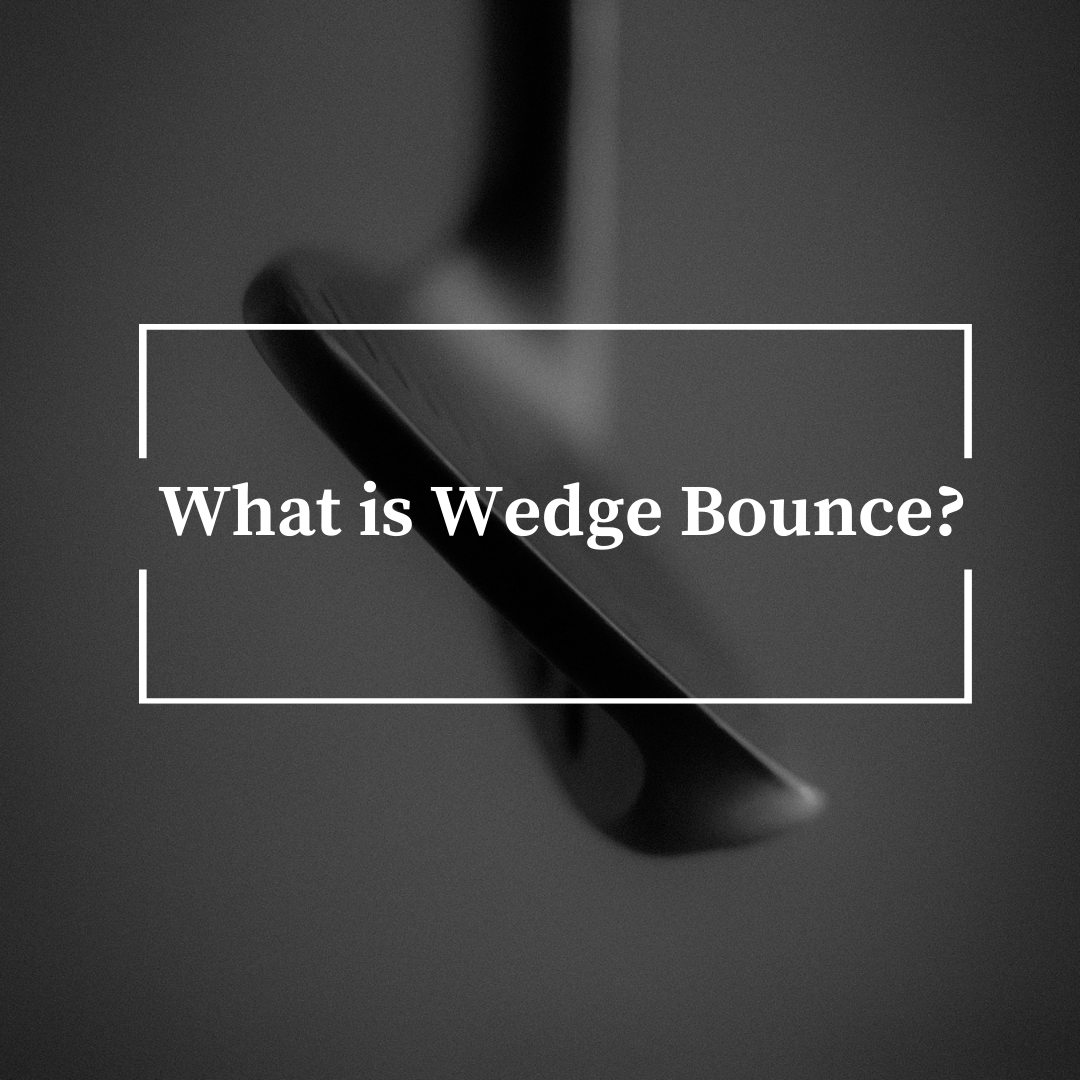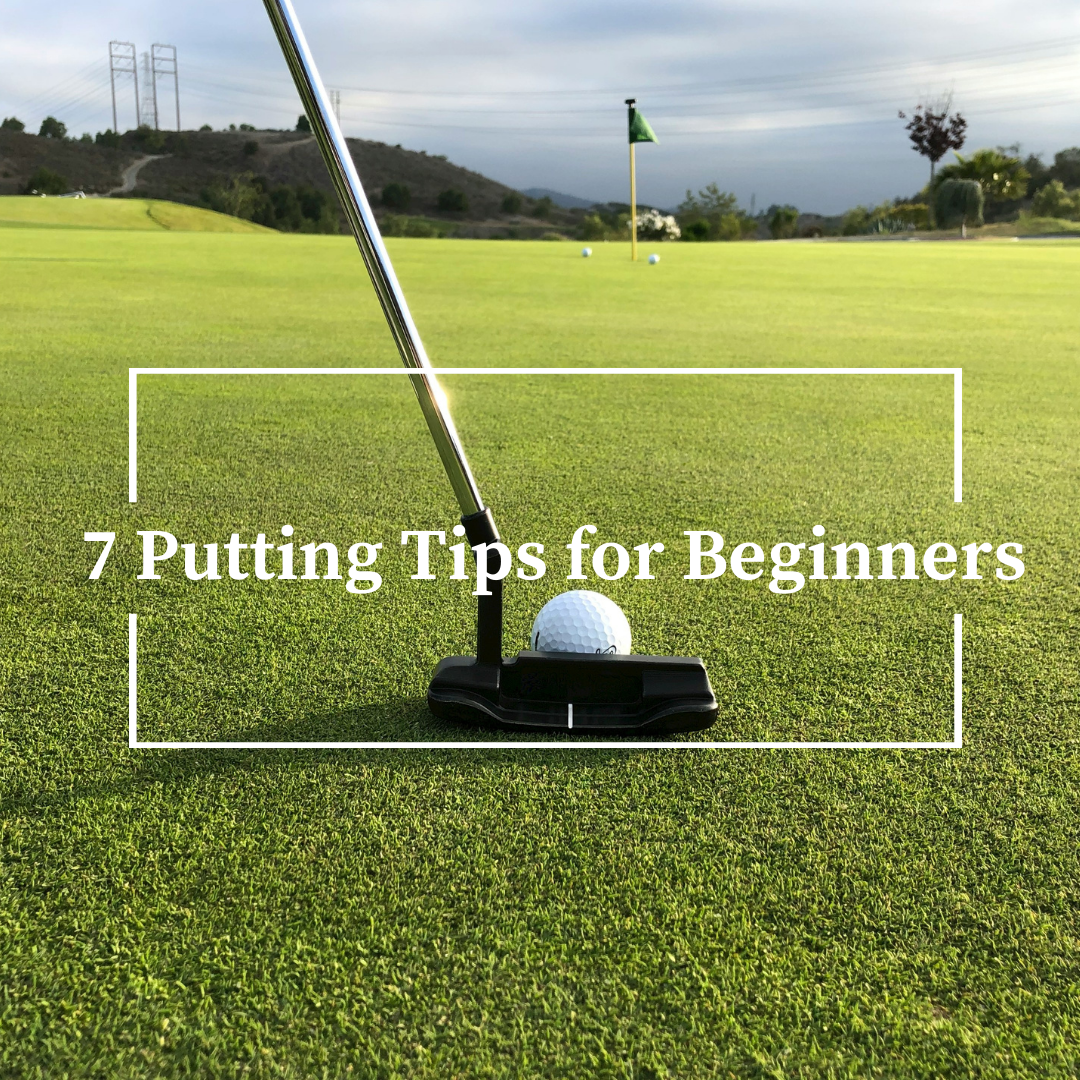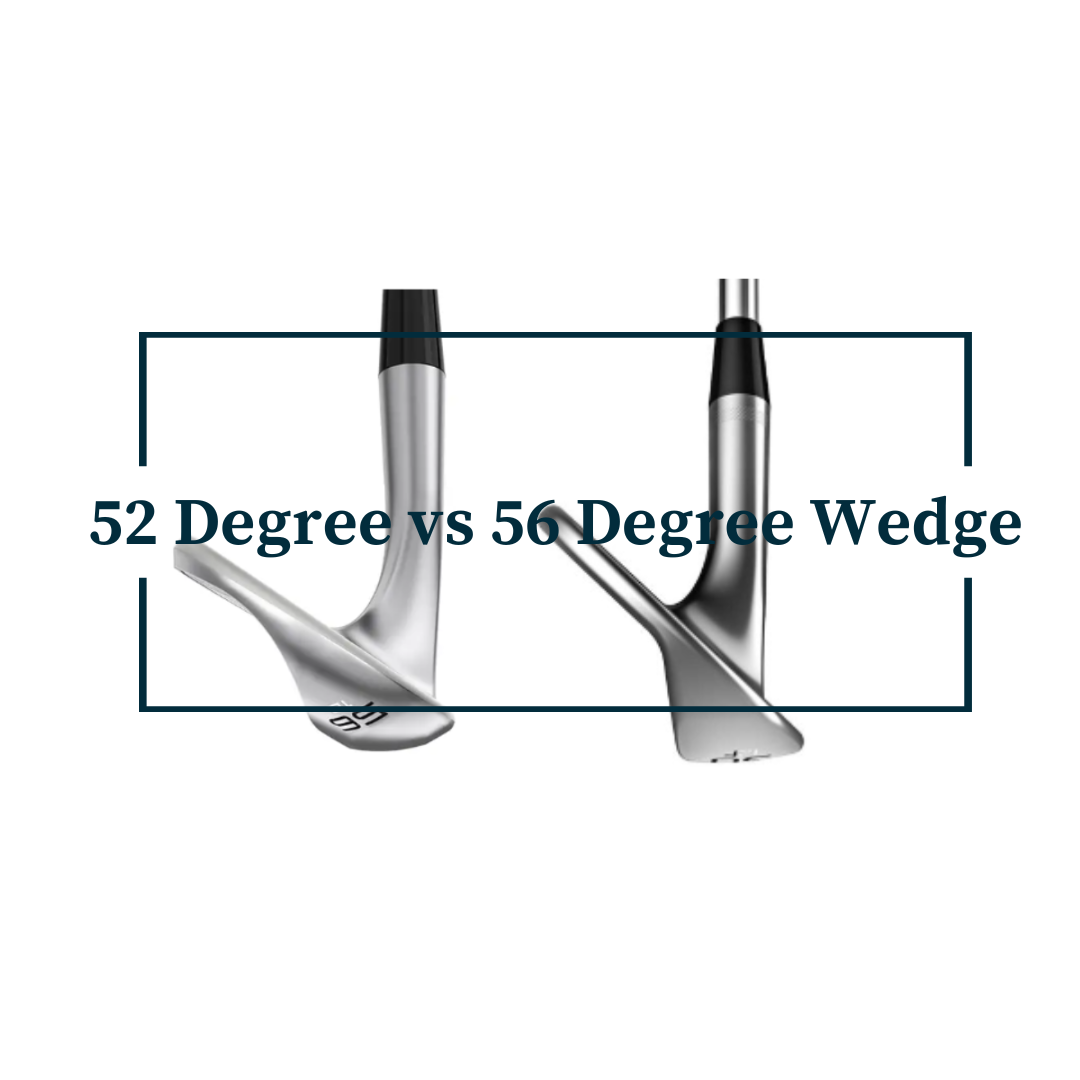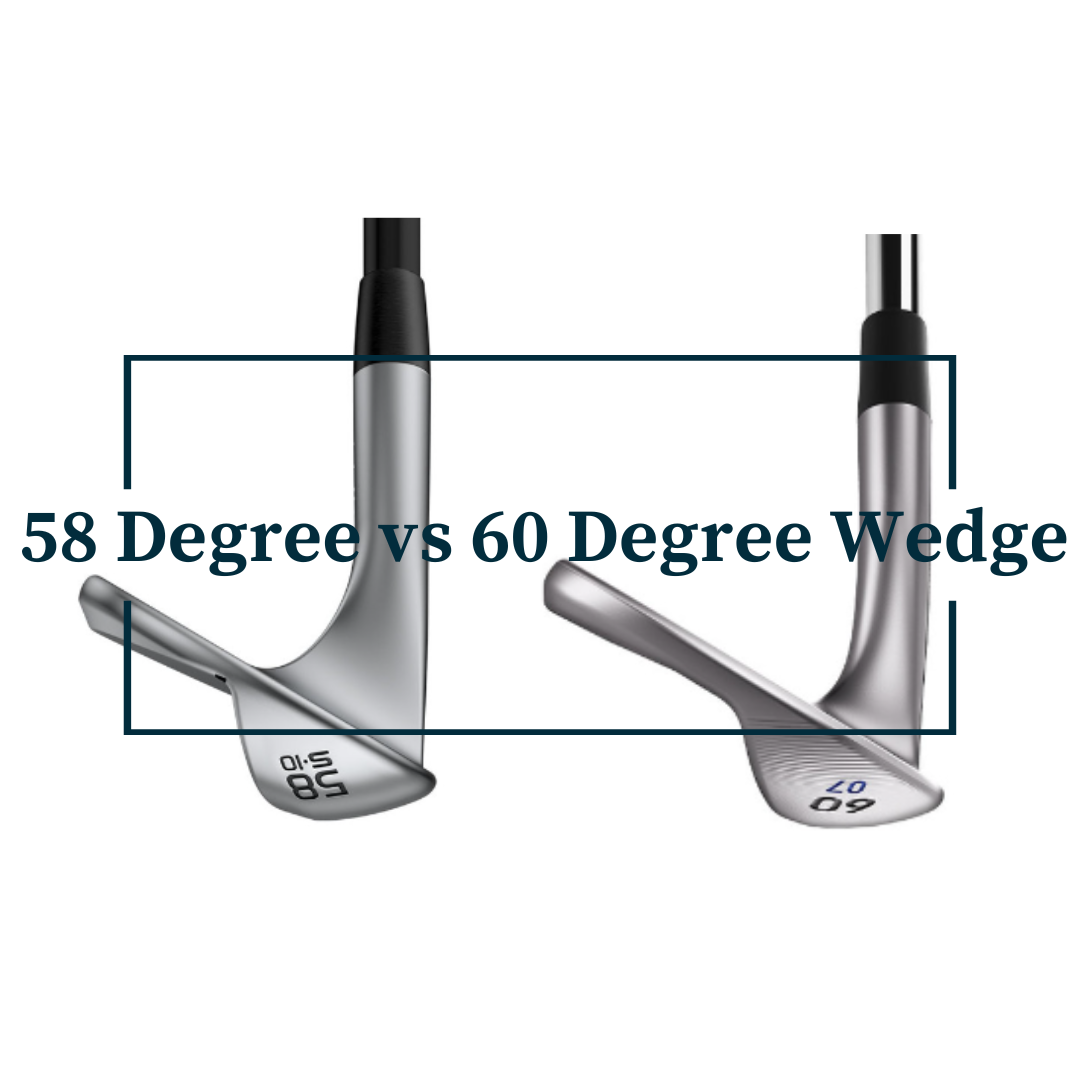If you are new to the game of golf, you need to know the different types of golf clubs and what each club is used for. Understanding the this can help you improve your game to choose the right club for each shot. The different types of golf clubs are:
- Driver
- Fairway woods
- Hybrids
- Irons: Driving Iron, Long Irons, Mid Irons, Short Irons
- Wedges
- Putter
- Specialty Clubs
Driver
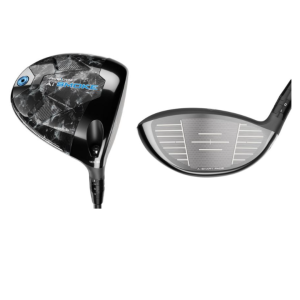
The driver is the longest club in your bag. Its goal is to get the ball as far as possible towards the green. The clubhead of a driver is the largest of any club, and is designed to maximize distance.
Some key characteristics of a driver:
- Head: Driver head size range from 440 to 460cc. The head is the largest of any club in the bag.
- Shaft: Driver shafts range from 45.5 to 46.75 inches. The shaft of a driver is longer than other clubs, which allows for a greater swing arc and more swing speed. This is to maximize distance.
- Loft: Driver lofts range from 8 to 11 degrees. The loft of a driver is lower than other clubs, which means the face of the club is flatter. This helps to create a lower trajectory and more distance.
- Center of Gravity (CG): If you are starting out you want the CG of a driver placed low and back in the clubhead. This is the case for most drivers. This helps to create a higher launch angle and more forgiveness.
- The Moment of Inertia (MOI): The MOI is a measurement of how resistant the club is to twisting at impact. Drivers have a high MOI, which means they’re more forgiving for off-center hits.
The driver is an essential club for the bag, so any golfer needs to be comfortable hitting driver. Without it, a golfer will struggle to improve.
What is a Driver Used for?
A driver is used to hit the ball off the tee box. It can be used to hit off the fairway but it would be rarely used this way, especially from the average golfer. You may see a professional hit driver off the fairway from time to time.
Fairway Woods
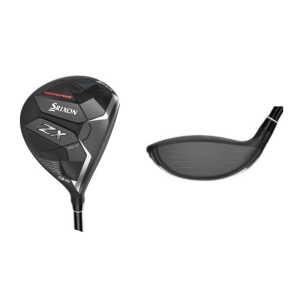
Fairway woods are made out of metal and so they are also called metals. There are variety of woods: 3, 5 & 7-wood. It is up to the golfer to decide what woods they want in their bag.
Some key characteristics of woods:
- Head: Fairway woods head size range from 150 to 200cc. The head of a fairway wood is larger than an iron but smaller than a driver.
- Shaft: Fairway woods shaft range from 40 to 43 inches. The shaft is longer than an iron but shorter than a driver.
- Loft: The loft of a fairway wood is between 15 and 23 degrees. The lower loft is the 3-wood and higher loft is the 7-wood.
- Center of Gravity (CG): Like a driver, if you are starting out you want the CG of the fairway wood placed low and back in the clubhead. This is the case for most fairway woods. This helps to create a higher launch angle and more forgiveness.
- Moment of Inertia (MOI): Fairway woods have high MOI, not as much as a driver though. So there will be forgiveness to reduce the effects of off-center hits.
Fairway woods are also essential clubs in the bag. But, it depends on the golfer’s preference & skill level on what woods are needed. I would not recommend having all varieties of woods in the bag. As you have a 14 club limit and there are other clubs that can replace a fairway wood. For me, I have a 3 & 5 wood.
What is a Fairway Wood Used for?
Fairway woods have a variety of uses:
- From the tee box: if driver is too risky or setting up for your 2nd shot on a par 4 or par 5 or sometimes a long par 3 may need a fairway wood.
- Laying up: shot from the fairway or rough to put you in a good position for your approach shot onto the green.
- Approach Shot: on to the green on a par 4 or par 5.
Hybrids
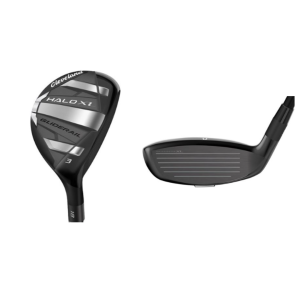
Hybrids, also known as rescue clubs and are a combination of fairway woods and irons. They are designed to be more forgiving than long irons and more versatile than fairway woods. Hybrids can be used to replace long irons or fairway woods.
Some key characteristics of hybrids:
- Head: Hybrids head size range from 120 to 170cc.
- Shaft: Hybrids have a shorter shaft than a fairway wood by about 2 to 3 inches. Hybrids shaft length ranges from 38 to 41 inches.
- Loft: The loft of a hybrid is like that of the longer irons, ranging from 18 to 27 degrees.
- Center of Gravity (CG): Hybrids CG is lower and further back than a long iron, allowing higher launch angle and provides more forgiveness.
- Moment of Inertia (MOI): Hybrids have a higher MOI than long irons, which means they are more forgiving on off-center hits.
Hybrids are a new club with regards to golf and they are very popular with golfers due to their versatility. The golfer has to think about the construction of their bag and what clubs they need for their game. For me, hybrids are an essential club and I carry a 4 hybrid in my bag.
What is a Hybrid Used for?
The appeal of a hybrid is in its versatility. It can be used all over the golf course. Hybrids are designed to replace long irons and higher lofted fairway woods.
The use for a hybrid are like that of a fairway wood. The only difference would be chipping around the greens. This is rare and must be practiced but can be a good option, and should be used with the below in mind:
- Have a clean lie: fairway length grass or 1st cut of rough.
- Have enough distance to work with to the hole: as the ball does not have any backspin.
Driving Iron
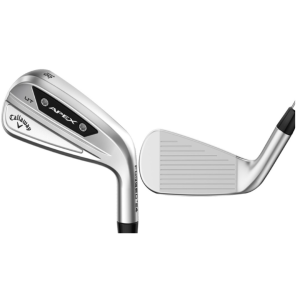
A driving iron, also referred to as a utility iron, replaces the need for a 2 and 3 iron. The average golfer will not need a driving iron in their bag. It is more for the advanced or lower handicap player where they have the ability to shape and control the ball. The driving iron has a lower trajectory than a hybrid & fairway wood and they are more difficult to hit.
Some key characteristics of a driving iron:
- Head: the driving iron has a longer clubface than other irons and has a lot more mass in the sole of the club. The clubface is straight and not curved which helps to reduce spin and promote a lower penetrating ball flight.
- Shaft: Driving Iron shafts range from 38 to 41 inches.
- Loft: The loft of a driving iron is between 17 and 23 degrees.
- Center of Gravity (CG): The CG is located higher and more forward than a hybrid which means the ball will have a lower launch angle and less spin.
- Moment of Inertia (MOI): Driving irons have a lower MOI, meaning they are less forgiving on off-center hits than hybrids and fairway woods.
Driving Irons are optional and not a necessity for your bag. I do not have one and prefer to use fairway woods and hybrids in place of a driving iron.
What is a Driving Iron Used for?
Like a hybrid the driving iron is a versatile golf club and can be used in a variety of ways:
- Off the tee: as the name suggests, the driving iron can be a substitute for driver from the tee box on a longer par 3 or hitting a shot with less distance on a par 4.
- In the rough: due to their wide sole they cut through the rough better than a fairway wood or hybrid.
The key difference is a driving iron can not be used with chipping around the greens due to its straight clubface.
Long Irons
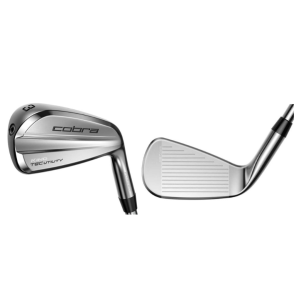
When someone refers to a long iron they are talking about 2, 3 and 4 iron. Back when I first started playing 20+ years ago the 2 and 3 irons would be in the iron set. Nowadays, this is less likely as they are replaced with hybrids and utility irons which travel the same distance and are more forgiving.
Some key features of long irons:
- Shaft: Long Iron shafts range from 38 to 40 inches. The shorter the shaft is the 4 iron and longer the shaft is the 2 iron.
- Loft: The loft of long irons are between 16 and 24 degrees. The higher the loft is the 4 iron and the lower the loft is the 2 iron.
- Center of Gravity (CG): The CG is located higher and more forward than a driving iron and hybrids which means the ball will have a lower launch angle and less spin.
- Moment of Inertia (MOI): Long irons have a low MOI, meaning they are less forgiving on off-center hits than utility irons, hybrids and fairway woods.
The need for a 2 and 3 iron is not required for the average golfer as there are better replacements out there in hybrids and driving irons. The 4 iron however, is something that should be looked at to see if it is needed in your bag. I have a 4 iron in my bag but more and more I am not using it and prefer hitting my hybrid.
What is a Long Iron Used for?
The are three main purposes for long irons:
- Laying up: shot from the fairway to put you in a good position for your approach shot onto the green.
- Approach Shot: on to the green on a par 4 or par 5.
- Punch shot: if you are in the trees and need to hit a low trajectory shot back out on to the fairway.
One lie to avoid using a long iron is in the rough as it does not cut through the grass as well and the risk is the club turns in your hands. Meaning you will lose direction and control of your shot.
Mid Irons
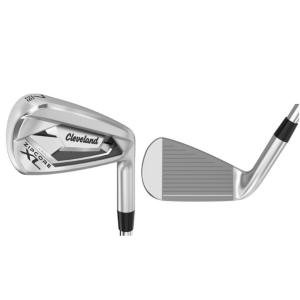
When someone refers to a mid iron they are talking about 5, 6 and 7 iron. I remember when I started playing golf, the 7 iron was my go to as it is the easiest iron to hit. If you get lessons or club fittings they will always ask you to hit your 7 iron to assess your swing and distance.
Some key features of mid irons:
- Shaft: Mid Irons shaft range from 36.5 to 38.5 inches. The shorter the shaft is the 7 iron and longer the shaft is the 5 iron.
- Loft: The loft of long irons are between 27 and 34 degrees. The higher the loft is the 7 iron and the lower the loft is the 5 iron.
- Center of Gravity (CG): The CG is located lower and back which means the ball will have a higher launch angle and more spin.
- Moment of Inertia (MOI): Mid irons have a high MOI, meaning they are more forgiving on off-center hits than long irons.
Mid irons are essential for golfers of all skill levels and are a necessity in the bag.
What is a Mid Iron Used for?
The mid irons have a variety of uses:
- Off the tee box: for par 3s
- Laying up: shot from the fairway to put you in a good position for your approach shot onto the green.
- Punch Shots: mid irons provide more control but less distance with punch shots than long irons.
- Approach Shots: on to the green on a par 4 or par 5 anywhere from 190 yards out from the green.
Short Irons
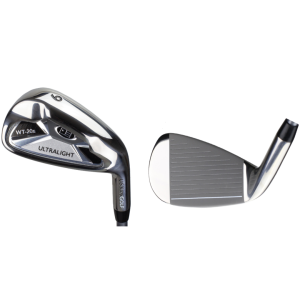
When someone refers to a short iron they are talking about 8 and 9 irons. Short irons will hit the ball high due to the higher loft, with less distance but more spin. Short irons like the 6 and 7 irons are a easy club to hit.
Some features of short irons:
- Shaft: Short Irons shaft range from 35.5 to 37 inches. The shorter the shaft is the 9 iron and longer the shaft is the 8 iron.
- Loft: The loft of short irons are between 38 and 42 degrees. The higher the loft is the 9 iron and the lower the loft is the 8 iron.
- Center of Gravity (CG): The CG is located lower and back which means the ball will have a higher launch angle and more spin than long and mid irons.
- Moment of Inertia (MOI): Short irons have a high MOI, meaning they are more forgiving on off-center hits than long & mid irons.
What is a Short Iron Used for?
The main purpose of short irons are for approach shots onto the green.
Short Irons have greater accuracy than the other irons as they travel a lesser distance and create more spin due to the higher loft. Meaning there is less margin for error to hook or slice the ball.
Wedges
Wedges are an essential part of any golf bag, and they come in four different types:
- pitching wedge
- sand wedge
- gap wedge
- lob wedge
They look like an iron but they have higher lofts and each wedge has a different loft. This means each wedge can be used for different shots.
An important term when it comes to wedges, is wedge bounce. Wedge bounce is the angle created between the leading edge of the club (lowest point of the face) and the trailing edge (the lowest point of the back of the club head).
This part of the club is the part that hits through the ground as the wedge contacts the ball. The higher degree of wedge bounce, the higher the leading edge is off the ground when you address the golf ball. Meaning it will glide across the surface and not dig into the ground.
Pitching Wedge
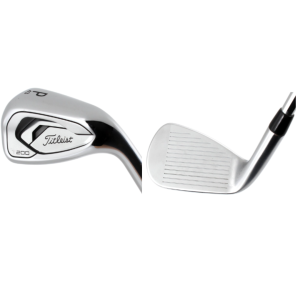
The pitching wedge is a must for any golf bag. It is the most known of the wedges and it is the lowest lofted wedge.
Some features of a pitching wedge:
- Shaft: Pitching Wedge shafts range from 34.5-36 inches, the shorter shaft provides more control over the shot.
- Loft: The loft of a pitching wedge is usually between 44-48 degrees.
- Wedge bounce angle: for a pitching wedge they have low wedge bounce of 2-5 degrees. This allows the leading edge to get under the ball for the longer approach shots & prevents thinning the ball.
What is a Pitching Wedge Used For?
The main purpose for the pitching wedge is for the longer wedge approach shots from any distance between 80-120 yards from the green. The pitching wedge with its loft will get the ball high in the air and put more spin on the ball than irons. This will allow the ball to land softly on the green.
Other shots a pitching wedge can be used for are chip shots around the green.
Sand Wedge
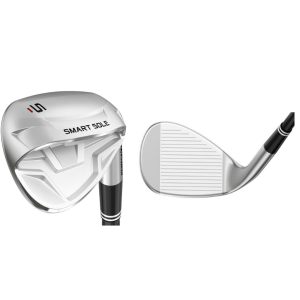
The sand wedge like the pitching wedge is a must for any golf bag. It is one of the higher lofted wedges.
Some features of a sand wedge:
- Shaft: Sand Wedge shafts range from 34.25-35.75 inches.
- Loft: The loft of a sand wedge is usually between 54-56 degrees.
- Wedge bounce angle: for a sand wedge it has high wedge bounce of 10-16 degrees. This prevents the leading edge digging into the ground through impact, which is needed in the sand or other soft surfaces.
What is a Sand Wedge Used For?
The main purpose of the sand wedge, as the name states is out of the bunker. With the high wedge bounce it is less prone to digging into ground through impact and having a bouncing effect in soft surfaces.
It can be used for approach shots anywhere from 50-80 yards from the green. Also chipping around the green a sand wedge can be useful.
Gap Wedge
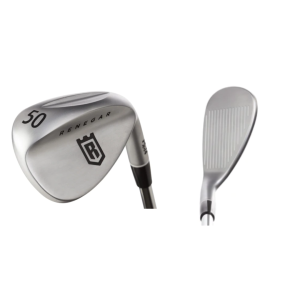
A gap wedge is something you probably wouldn’t have heard of or used if you are a beginner. The more seasoned golfer would have a gap wedge in their bag. Usually a gap wedge is purchased separately when you buy a set of clubs as an extra.
The loft of a gap wedge is between a pitching and sand wedge.
Some features of a gap wedge:
- Shaft: Gap Wedge shafts range from 34.5-36 inches.
- Loft: The loft of a gap wedge is between 49-52 degrees.
- Wedge bounce angle: for a gap wedge it has medium wedge bounce of 5-10 degrees. It has a bit more versatility than a pitching wedge due to the higher wedge bounce.
What is a Gap Wedge Used for?
The gap wedge, as it names states it fills the gap between a pitching and sand wedge. It has similar uses to a pitching wedge. Due to the higher loft the approach shots for a gap wedge will be a bit lower, 75-100 yards.
With the higher wedge bounce it would be better to use a gap wedge chipping around the green as it will cut through the surface through impact better.
Lob Wedge
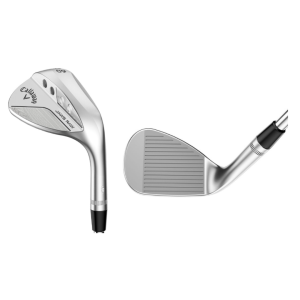
A lob wedge like a gap wedge will not be familiar to a beginner golfer. It also does not come in the set of clubs and would be an extra.
Some features of a lob wedge:
- Shaft: Lob Wedge shafts range from 34.25-35.75 inches.
- Loft: The loft of a lob wedge is usually between 58-62 degrees.
- Wedge bounce angle: for a lob wedge it has a high wedge bounce of 8-13 degrees. This allows for shots where you want to cut through the surface more.
For more information on a lob wedge check out the 58 degree vs 60 degree wedge article to give you a more in-depth assessment on what lob wedge would best suit your game.
What is a Lob Wedge Used for?
With the lob wedge having the most loft of all wedges, they will not travel as far as the other wedges. They will be useful for approach shots from 30-50 yards from the green. It is important to note the 30-50 yardage takes into account when hitting a lob wedge it is recommended to be hitting them at 1/2 to 3/4 swing power to maximize control.
They can also be used out of the sand with their high wedge bounce to cut through the sand. The same goes with thicker rough, the combination of high loft and wedge bounce can cut through the rough and get the ball high into the air for a soft landing onto the green.
The trickier shots where you are needing to chip over a bunker or water onto the green, the lob wedge can be very useful due to the high loft.
Putter
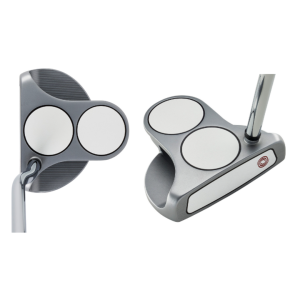
As they say ‘get to love your putter’. The putter is the most important club in your bag and the club that you will use most throughout a round of golf. It can definitely make or break a round.
There are two types of putters:
- Blade putters: have a thin, rectangular clubhead and are longer from heel to toe. They suit golfers who like to use the putter face to aim putts and have an arc style putting stroke.
- Mallet Putters: have a larger, more rounded clubhead (looks like a semi-circle). They suit golfers who have a straight back and straight through club path. Beginners should use a mallet putter as they are more forgiving with greater stability with off-center strikes.
Some key features of a putter:
- Head: there are two types as described above the mallet or blade putter head.
- Shaft: putter shafts vary as there are long, belly and the standard putter. For the average golfer & the majority of professionals they use a standard putter. The standard putter length is 32-34 inches. For a long putter it is 48-52 inches and a belly putter it is 41-44 inches.
- Loft: The loft of a putter is 2-4 degrees. This raises the ball out of the grass and rolling on the green to the hole.
- Alignment: Most putters have alignment aids, such as lines or dots on the head, to help golfers line up their shots.
- Grip: The grip of a putter is thicker and softer than the grips of other golf clubs. There are different grip sizes to suit a golfers putting stroke.
What is a Putter Used for?
The main purpose of the putter is it to be used anywhere on the green. It can also be used when the ball is just off the green, when the ball is still in the short grass. Putting from off the green, given the right lie has a lot less room for error than a chip shot with a wedge.
You will tend to see if you are watching the British Open (which is a links course) the professionals putting the ball from 20+yards off the green due to the short grass.
Specialty Clubs: Chipper
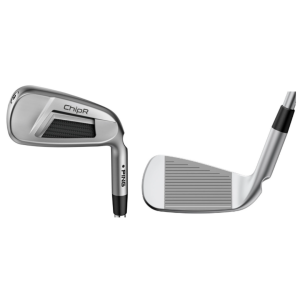
Specialty clubs are designed to help golfers with specific shots. The chipper is designed to help golfers with chips and pitches around the green. It has a smaller head and is used for shots that need low trajectory and minimal spin.
The chipper is allowed to be used by professional players as identified by the USGA rules. They are deemed an iron and must conform to the the requirements of woods and irons.
There are no current professional players who use a chipper in their bag.
Some key features of a chipper:
- Head: the head of the chipper is a cross between a putter and wedge.
- Shaft: chipper shafts are more akin to a standard putter, they range from 33-36 inches. This allows more control for the golfer, with a more consistent strike and distance control.
- Loft: the loft of a chipper range from 30-40 degrees. This allows for the ball to get off the ground but not to the height of a pitch shot.
- Bounce Angle: Like a wedge a chipper has a bounce angle, which ranges from 6-8 degrees. Medium bounce angle to avoid the leading edge digging into the ground.
What is a Chipper Used for?
The chipper has many uses:
- Approach shots: from 30 yards to the green, where there is no trouble between you and the hole. The loft on the chipper will provide a bump and run style shot, where it will be in the air for a short time and roll out to the hole.
- From the fringe: where you are unable to choose between a putter and wedge – the chipper is the ideal option.
- Light Rough: off the green in light rough with some green to work with to allow the ball to roll out to the hole.
An important point is how to hit a chipper. When hitting the chipper, you would use the same shot as your putting stroke.
Final Thoughts
Congratulations! You now have an understanding of the different types of golf clubs and their uses. There are set types of golf clubs but the clubs within each type can vary considerably. That is why when choosing the right clubs within each type, they need to be right for you.
This can be a confusing process. But nowadays when you are starting out there are beginner club sets which will do the job. Then as you become more skilled and knowledgeable about your game you can start to try out other clubs and start bringing these clubs into your bag, like a lob wedge or a 7-wood.
Frequently Asked Questions
What are the essential types of golf clubs needed for a beginner?
If you’re just starting out, it’s important to have a basic set of clubs, that include an iron set and putter. As you become more experienced, you can add other clubs to your bag. Find out more about what clubs you should have in your bag based on your skill level.
What are the main differences between the various golf club irons?
The main differences between golf club irons are the loft, which determines the angle of the club face, and the length of the shaft. Lower-numbered irons, such as the 3-iron and 4-iron, have less loft and longer shafts, making them better for longer shots. Higher-numbered irons, such as the 9-iron and pitching wedge, have more loft and shorter shafts, making them better for shorter shots.
How does each type of golf club affect the distance of a shot?
Each type of golf club affects the distance of a shot based on the loft of the club and the length of the shaft. Generally, clubs with less loft and longer shafts, such as drivers and fairway woods, will hit the ball farther than clubs with more loft and shorter shafts, such as irons and wedges. However, the distance of a shot also depends on the swing of the player and the conditions of the course.
How can I identify which golf club to use for different shots on the course?
The best way to identify which golf club to use for different shots on the course is to practice and gain experience. Generally, drivers are used for long shots off the tee, while fairway woods and hybrids are used for longer shots from the fairway. Irons are used for approach shots to the green, while wedges are used for shorter approach shots and chipping around the green. The putter is used anywhere on the green to roll the ball into the hole. However, always consider the distance, lie of the ball, and the conditions of the course when choosing the right club.

